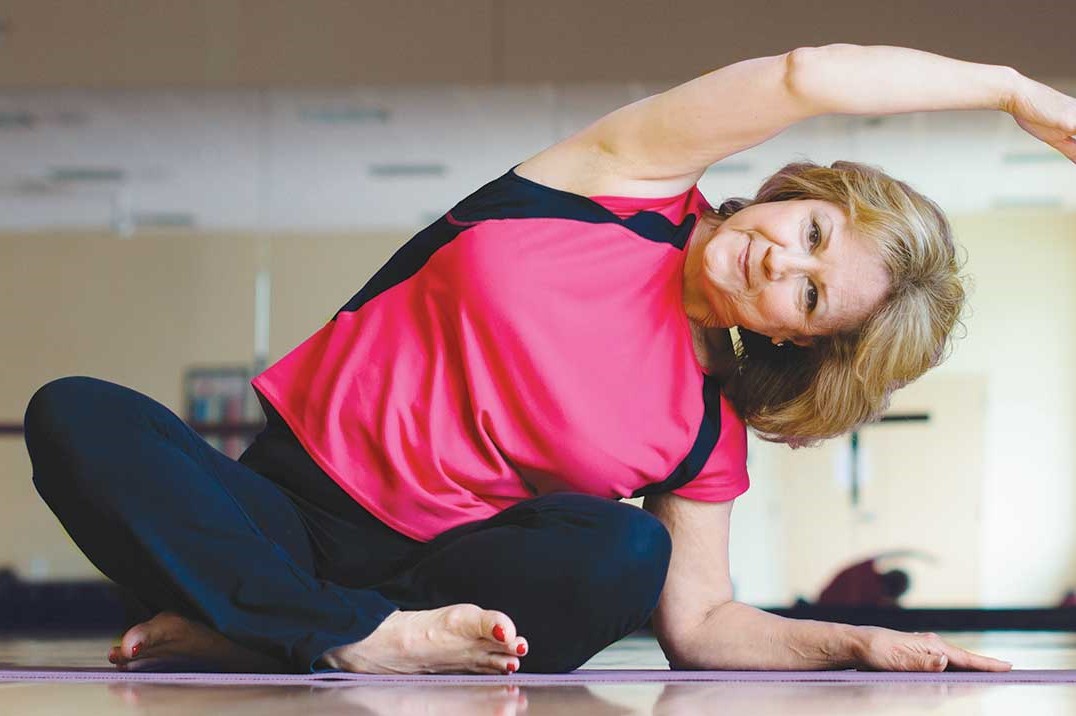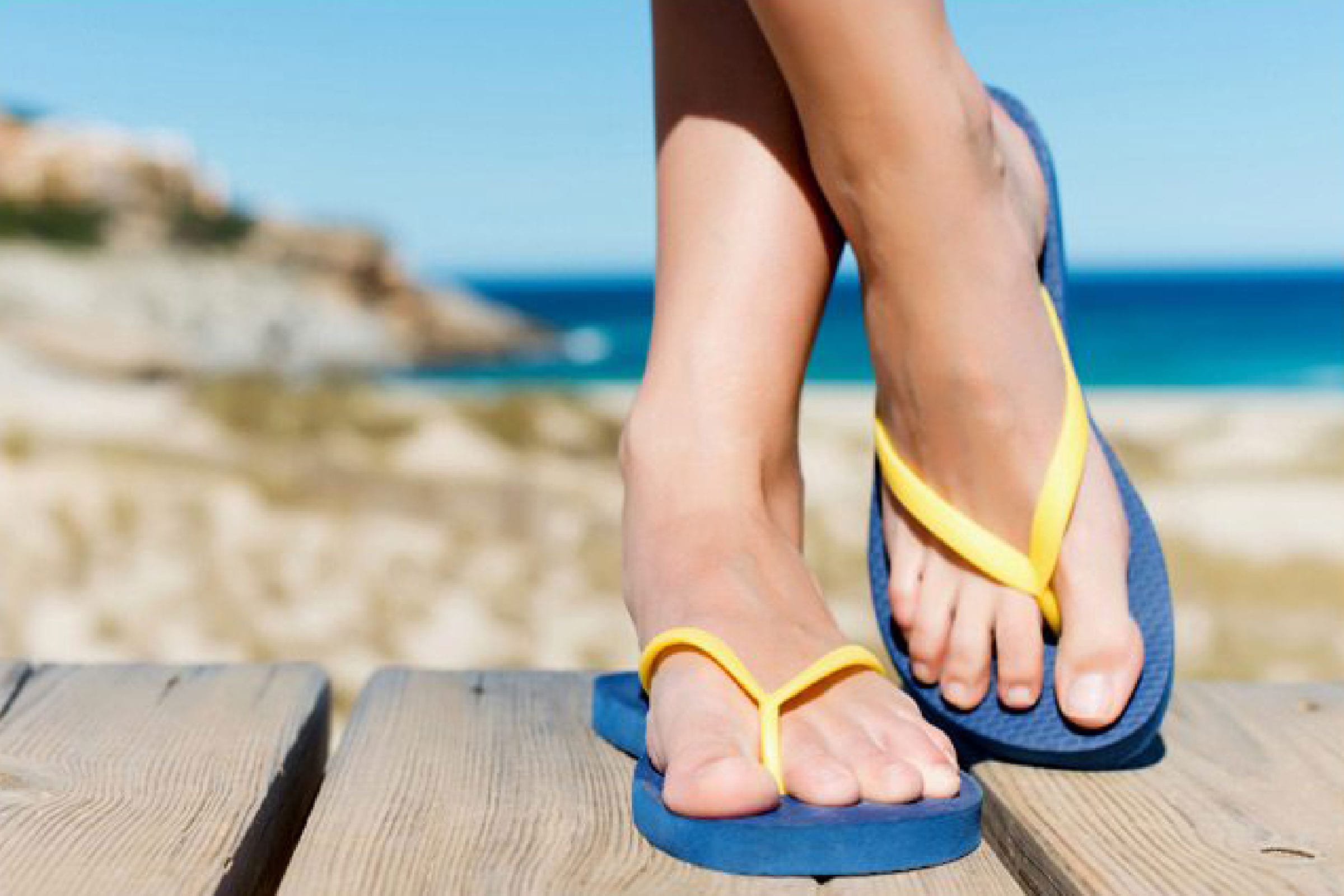Seniors: Stuck Inside Doesn’t Have to Mean Sedentary
Then and Now: How Homecare Has Changed Over 20 Years
Preparing for Joint Replacement Surgery
Let’s talk about that dreaded moment … when knee pain prevents you from getting into the car. Or your hips are so sore that putting on socks seems impossible.
If this sounds familiar, you’re in good company. By 2030, about 11 million Americans will have either a hip or knee replacement — making joint replacements one of our most common elective surgical procedures.
Being prepared in advance, and receiving the right care immediately following, is key to an excellent recovery, according to Crystal Madyda, PT, RVNAhealth Rehabilitation Services Team Lead.
“Patients used to spend days in the hospital, and then weeks in a short-term rehab facility,” Madyda says. “Now, most spend a maximum of two days in the hospital, followed by in-home therapy and then outpatient care. People tend to do better at home; hospitalization increases their risk of infection.”
Home Safety and Post-Surgery Therapy
RVNAhealth’s Motion Matters programs — designed for those getting joint replacements or other significant surgeries — include a home safety evaluation to ensure that your home is properly equipped for potential physical limitations and begin aftercare promptly after surgery (often within 24 hours of returning home).
Physicians rely on the home safety recommendations to determine if it’s safe for a patient to return home post-surgery, says Gigi Weiss, MSPT, director of RVNAhealth Rehabilitation Services.
Recommendations might include installing a shower chair, grab bar or elevated toilet seat in the bathroom. The therapist making the assessment will also note if a home has lots of stairs and the quality of handrails.
“We also look at factors including the height of your bed. Is it on the ground level. Do you have someone to help you?” she says.
“We want to keep you safe so that upon arrival home, recovery and recuperation can begin in earnest,” Weiss explains. “Within two weeks, eighty percent of our in-home therapy patients have recovered enough to begin outpatient therapy.”
To learn more, visit rvnahealth.org/services/get-well/rehabilitation-therapies.
RVNAhealth’s Gigi Weiss Earns Innovation Award
Feeling Dizzy? You’re Not Alone.
More than one in three Americans will experience dizziness at some point in their lives.
If you’ve never heard the words “vestibular therapy” before, consider yourself lucky. And about to be informed. If you’ve ever experienced vertigo, feeling dizzy, falls, or imbalance, however, the words might ring a bell.
Vestibular therapy is a form of rehabilitation, performed by specially-trained physical therapists, that specifically addresses balance and dizziness. Dizziness is the second most common complaint heard in doctors’ offices and the #1 complaint for individuals over 70. Statistics reported by The National Institute of Health indicate that dizziness will occur in 90 million of the nation’s population at some time in their lives.
Feeling Dizzy?
“People get dizzy – aka ‘the vertigo’ — for a variety of medical reasons,” says Gigi Weiss, MSPT, Director of Rehabilitation and one of three certified vestibular therapists at RVNAhealth (in addition to Crystal Madyda and Casey Sarmiere). “And it can occur gradually or come on suddenly and acutely. It can range from absolutely debilitating to simply annoying and inconvenient. In all instances, when you’re dizzy, you need to find out why.”
The role of the vestibular therapist is to do just that — identify the root cause and develop and execute a therapeutic plan to address it. “At RVNAhealth, we see vestibular patients of all ages, including children, both at our Rehab Center and in their homes. Some already understand where the dizziness is coming from, and we treat them. Others don’t know and it’s our job to help them find out and regain their equilibrium.”
If you are experiencing general dizziness; suffer from headaches or frequent falls; experience imbalance or the need to hold onto objects when walking, it’s time to explore the issue. Call the RVNAhealth Rehabiliation team at 203-438-5555.
Mind Those Curves!
Above: Students off to conquer the world!
With the 2019-20 school year in session, it’s time to pay attention to one big test that many students today face. You might be thinking about those pesky, annual standardized tests, or perhaps the SATs. But today we’re here to talk about posture.
“Kids’ postures are under constant assault these days,” says Gigi Weiss, MSPT, RVNAhealth’s Director of Rehabilitation. She points to a couple of culprits. First, the stuffed-to-the-gills backpacks that students often lug to, from and around school each day. Second, cell phones, which – when stared down at too much – can cause a painful condition known as “text neck.”
Misuse of these ubiquitous accessories places an enormous amount of stress on growing, developing bodies, and can eventually cause a slumping posture. A normal, healthy spine has an S-shaped curve,” says Weiss. “When you’re slumping, the spine has a C-shaped curve.”
Some signs that your child might need a better (or lighter) backpack or less time staring down at a cell phone include discomfort or pain in the neck, shoulder or lower back, or any combination of the above.
To help your child avoid getting text neck or a C-shaped curve, Weiss shares some recommendations:
Backpacks
- Should ideally be 10 percent, but never more than 15 percent, of body weight (for your 50-pounder, that’s just 5-7 pounds!).
- Straps should be on both shoulders and cinched tightly to the body.
- Heaviest items should be placed closest to the body.
Cell phones (this can be trickier!)
- Teach your kid to look down at the screen with their eyes, rather than bending the neck – or to hold the phone up closer to eye level.
- When you see hunching, encourage backward shoulder rolls: Shrug shoulders, extend shoulder blades toward each other…enjoy, repeat.
- Encourage daily physical activity (a win/win, compared to simply limiting device time)
To learn more about keeping your child’s S-curve in tiptop shape, contact the RVNAhealth team at 203-438-5555 or AskOurPT@rvnahealth.org.
Beware the Innocent Flip Flop
Whether you are heading to the beach, taking a dip in the pool, or taking a stroll to get ice cream, flip flops are a popular shoe choice for slip on and go!
However, having the wrong flip flop can not only put a damper on summer, but can be a health hazard for those who do not pick the right ones to wear, according to Gigi Weiss, MSPT, RVNAhealth’s Director of Rehabilitation Services.
Flip flops are breezy and cool, so what makes them so dangerous?
Explains Weiss, “Their appealing characteristics – lightweight, minimally structured, easy to slip in and out of – often lead to debilitating conditions, including back pain, knee pain, plantar fasciitis and Achilles tendonitis.”
Your aching back
For starters, says Weiss, many flip flops have thin soles and minimal arch support. “This can wreak havoc on your kinetic chain – the muscles, connective tissues, joints, bones and nerves that work together – and cause back or knee pain.”
Heel and lower-leg pain
Another threat unique to flip flops is that tiny thong that separates your big toe from the rest of its partners. While this design allows your feet plenty of room to breathe, it also means that the tendons in your toes need to work constantly to grip the bottom of your footwear.
This, says Weiss, often leads to plantar fasciitis – a painful condition resulting from inflammation of the fibrous tissue along the bottom of your foot that connects your heel bone to your toes.
Traveling a bit farther up the leg, another area where you might experience discomfort is in the Achilles tendon. This largest tendon in your body connects your calf to your heel bone, notes Weiss. “Flip flops that lack support and structure cause the Achilles tendon to strain in unnatural ways, particularly if you have low arches or flat feet.”
What to do?
Patients who visit RVNAhealth’s Rehabilitation and Wellness Center with the conditions described above are generally prescribed a routine that includes biomechanical stretches to address the underlying symptoms, says Weiss. But, she adds, prevention is the best medicine. “If you must wear flip flops, purchase a pair with good orthotic support. And try to avoid wearing flip flops exclusively.”
For more information, contact RVNAhealth’s Rehabilitation and Wellness Center at 203.438.7862 or rehabcenter@rvnahealth.org.
Injuries: When to Say When
It’s always fun to meet a physical therapist (PT) at a party and ask them all the nagging questions that have been building up over the years. Since October is National Physical Therapy month — cheers! — we decided that rather than wait for you to happen upon a PT, we’d bring one to you.
Gigi Weiss, MSPT, is the Director of Rehabilitation at RVNAhealth, managing both in-home therapy services as well as Rehab by RVNAhealth, our outpatient center in Ridgefield. Weiss is also a licensed physical therapist and no stranger to receiving PT questions at parties and elsewhere.
Two of the most common questions Weiss and her colleagues hear have to do with timing: “When do I know it’s time to have surgery? and “How do I know when it’s time to treat an injury?” And while there is no one easy answer to either question, it generally comes down to pain.
“Pain is a sign that something is wrong. And when you have pain, it’s important to address it before it creates new problems,” says Weiss.
“When surgery has been recommended to address a condition, you want to be certain it’s the right choice and timing for you. When your pain is compromising the quality of your life — mobility, sleep, comfort — it’s time to take care of it. Physical therapy can often buy you time and help reduce discomfort prior to surgery, but waiting too long can cause compensatory injuries and can reduce your strength, making recovery longer.”
Regarding injuries, Weiss says that any injury or pain that’s with you for more than a few days should be assessed. What is it? Why did it happen? How can it be treated? How can it be prevented in future? These questions are all part of an evaluation (frequently covered by insurance) that aims to identify and treat the root cause, not the symptoms. “The sooner you do that,” says Weiss, “the better.”
To learn more or ask follow-up questions, please contact RVNAhealth at 203-438-5555.
RVNAhealth Launches Otago to Prevent Falls
Once you’re past the age of playing Ring Around the Rosy, falling down isn’t much fun. In fact, falls can be dangerous and are among the leading causes of injury to those age 65 and older. Approximately one third of healthy people in this age group will have at least one fall per year, which can result in often serious complications ranging from loss of independence and function to broken bones and other trauma. While falls can be the result of a variety of inter-related factors, leg muscle weakness and poor balance are often to blame. Enter the Otago Fall Prevention Program.
Recently launched by RVNAhealth, Otago is a strength and balance retraining program that reduces the risk of falls and related injuries by 35 to 40 percent. The program focuses on muscle strength, balance, flexibility, and reaction time — the contributing factors to falls that are most easily improved.
All RVNAhealth physical therapists are trained to deliver the program in the home setting, as well to outpatients at Rehab by RVNA. The program is already being integrated into the care plans for many RVNAhealth home health patients. Otago became RVNA’s fall prevention program of choice not only because of its proven effectiveness, but also because it can be easily customized for individuals at all stages of life and health.
“A fall can be dangerous at any age,” says Gigi Weiss, Director of RVNAhealth Rehabilitation Services. “But we’re all at greater risk of falling as we get older. What most people don’t realize is how easy it is to prevent. We know Otago works to improve a patient’s balance, stability, and strength so falling is much less likely.” Weiss stresses that even younger adults in the 55+ set can benefit from Otago in order to prevent a decline in balance as they age.
Otago involves a series of 20 progressive exercises that are performed in conjunction with a walking plan. After an initial balance skills assessment, a trained therapist tailors the program to each patient’s level of functioning, moving the patient to more advanced exercises when appropriate. The therapist works with a patient three times a week to start, tapering off over six to eight weeks. While comprehensive, each Otago exercise session takes only 30 minutes to complete. When patients are able, they also walk up to 30 minutes three days a week. After working one-on-one with the therapist, patients continue the exercises independently for maintenance, and see the therapist for a follow-up evaluation after six months.
“Apart from the fact that Otago works, the beauty of the program is that it is suited for a variety of settings to address patients of all walks of life,” says Weiss. “We can introduce Otago to our home health patients in their homes and continue the program as they transition to Rehab by RVNAhealth as an outpatient. We can also offer it as a stand-alone outpatient program for people concerned about falling, whether or not they’ve had a fall in the past.” Weiss notes that Otago may be covered by Medicare and other insurance plans when provided in conjunction with other prescribed home health and outpatient services.
RVNAhealth also has plans to offer Otago as a group program in community-based settings later this year. For more information, contact RVNAhealth at 203-438-5555.










